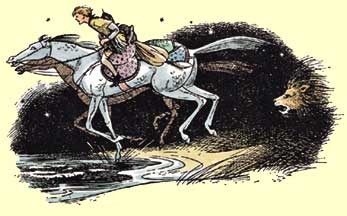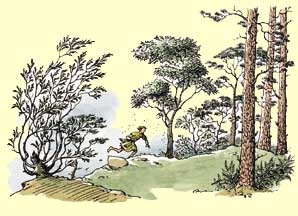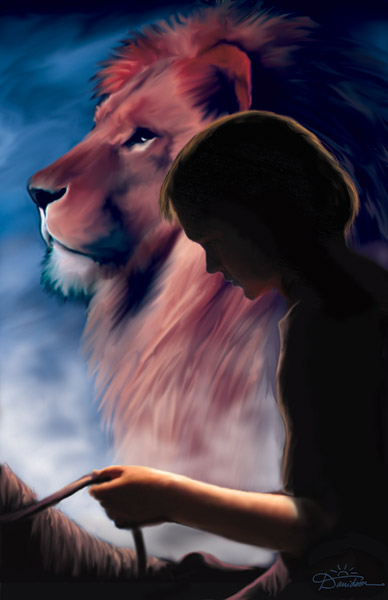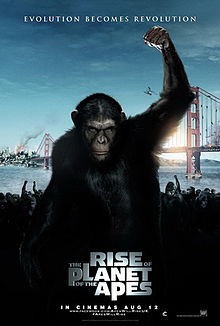Editor's Corner: "I Am a True Beast"

The Myth of the Birth of the Hero
The Horse and his Boy (originally entitled Narnia and the North) by C.S. Lewis is a story in the mould of the ancient Myth of the Birth of the Hero. A child of noble, royal, or divine birth is separated from his parents (he may have one human and one divine parent) in infancy, perhaps like Moses is exposed in a boat and rescued, usually by impoverished peasants who raise him in their hovel in the midst of an oppressed and blighted world. But already in childhood he shows signs of being special. He may have unexplained longings or unusual powers. He may have a twin; he may have a birthmark or other sign that will eventually prove his identity as a person of destiny. In his teens or early adulthood he undergoes various adventures and ordeals, struggling with the evil powers that took him from his parents and are blighting the world. He has help from a supernatural source--a potent talisman, an all-knowing guide, a remarkable animal. Ultimately he overcomes the dark powers, frees his world from tyranny and blight, returns to his true home and family, perhaps is enthroned.
The recurrence of the story in many places and times shows that it meets a deep need in human nature. It is a myth, not in the more usual sense of a falsehood, but of a tale embodying a profound spiritual truth. It may in be historically true in part; for example, the beloved story of Abraham Lincoln, the gifted boy born in a log cabin who came to be president and guided his country through the worst crisis in its history, has elements of the Birth of the Hero story. Or it may be wholly fictional, like the adventures of Luke and his twin sister in the Star Wars saga.
Shasta, the child-hero of C. S. Lewis' The Horse and His Boy, differs from most heroes in that he is guided--sometimes forcibly--by more than one extraordinary animal. He grows to youth in the hut of an impoverished and abusive fisherman named Arsheesh by the seashore in Calormen, "the land of tyrants and slaves;" but he has always longed to know what lies to the north. Shasta one night overhears Arsheesh admitting that the boy is not his son, and bargaining to sell him as a slave to an aristocratic visitor, a Tarkaan; at the same time, Shasta makes the astounding discovery that the visitor's horse, Bree, can talk. So he and Bree decide to run away together. Bree, who as a foal was kidnapped out of Narnia far to the north and has always longed to return there to freedom, teaches the inexperienced boy to ride. He uses his strength and geographical knowledge to guide their journey and avoid certain dangers.
Other Animal Guides
Shasta's first encounter with another animal guide is less happy. As the refugees travel along the seashore one moonlit night, they detect a  rider going in the same direction, evidently a Tarkaan on a fine blood mare. Anxiously they try to stay clear of the unknown. But a lion's dreaded roar from ahead on the right, then on the left, forces them and the other rider closer, until they are neck and neck. They escape the lion, but Shasta and Bree soon learn that the other rider is an aristocratic (and rather arrogant) girl Shasta's own age, and the mare another talking horse. The two animals stop, converse, learn that all four are fleeing to Narnia, and decide (over the children's objections) to join forces.
rider going in the same direction, evidently a Tarkaan on a fine blood mare. Anxiously they try to stay clear of the unknown. But a lion's dreaded roar from ahead on the right, then on the left, forces them and the other rider closer, until they are neck and neck. They escape the lion, but Shasta and Bree soon learn that the other rider is an aristocratic (and rather arrogant) girl Shasta's own age, and the mare another talking horse. The two animals stop, converse, learn that all four are fleeing to Narnia, and decide (over the children's objections) to join forces.
Shasta's second encounter with an unknown animal guide is more reassuring. He is separated from his companions outside the gate of Tashbaan, Calormen's capitol, spending the night alone on the edge of the desert (in an area reputed to be haunted by ghouls) that divides Calormen from Archenland and Narnia. Here the anxious boy finds a very large (domestic) cat suddenly touching his leg from behind. The beast's "eyes made you think it (sic) knew secrets it would not tell." Greatly comforted, Shasta goes to sleep with the cat at his back. He is awakened by harsh, piercing cries from the desert: approaching jackals. He sees a huge shaggy-headed animal bounding toward the predators, uttering an earth-shaking lion-roar that disperses them. Then he approaches the terrified Shasta. But instead of teeth and claws, the boy feels the comforting cat: "the warmth of it (sic) spread all over him."
His third encounter is more like the first. During the companions' separation in Tashbaan Aravis, Shasta's companion, has learned that a hotheaded prince of Calormen plans to take two hundred horsemen across the desert to raid Anvard, the castle of Archenland, an act which will enable Calormen to take over the country. The children and horses should have been able to warn Anvard in time, but, exhausted, they fall asleep.
 Shortly after they reach the green hills of Archenland they see a distant line of horsemen coming up rapidly. The two horses break into a gallop. They think they are giving their all until a lion's snarling roar in pursuit gives them the new speed of terror for one more mile. The spent horses reach a hermit's enclosure; the hermit sends Shasta running on.
Shortly after they reach the green hills of Archenland they see a distant line of horsemen coming up rapidly. The two horses break into a gallop. They think they are giving their all until a lion's snarling roar in pursuit gives them the new speed of terror for one more mile. The spent horses reach a hermit's enclosure; the hermit sends Shasta running on.
Shasta's climactic encounter with a mysterious animal guide takes place after he has delivered his warning to King Lune of Archenland and his courtiers, whom he meets out hunting (!) They lend him a horse and all ride eastward toward Anvard, but Shasta falls behind in a fog and takes a road going north up the mountains. At length, in darkness, hungry, cold, and lost, he is frightened out of his tears by the sound of someone  breathing beside him: "His invisible companion seemed to breathe on a very large scale." Terror of a ghost is somewhat allayed by the being's warm breath on his hand. The being tells him that the four lions he met, and the cat, were only one: "I was the lion." And he tells Shasta that they two also met long ago, when he pushed the ship's boat containing the infant Shasta to the shore toward Arsheesh's hovel. As the dawn approaches, he sees a golden radiance on his left, and in it a Lion larger than his horse. Shasta falls at his feet, and receives the Lion's kiss on his forehead. Then the beast disappears into the light.
breathing beside him: "His invisible companion seemed to breathe on a very large scale." Terror of a ghost is somewhat allayed by the being's warm breath on his hand. The being tells him that the four lions he met, and the cat, were only one: "I was the lion." And he tells Shasta that they two also met long ago, when he pushed the ship's boat containing the infant Shasta to the shore toward Arsheesh's hovel. As the dawn approaches, he sees a golden radiance on his left, and in it a Lion larger than his horse. Shasta falls at his feet, and receives the Lion's kiss on his forehead. Then the beast disappears into the light.
Shasta finds he is in Narnia. He sends a message to its King Edmund about the threat to Anvard, to which Edmund quickly responds by gathering a small army to defeat the besieging raiders. Shasta accompanies them, together with young Prince Corin of Archenland, whom he already met briefly in Tashbaan, and who looks exactly like himself. Anvard is saved, and Shasta, by his resemblance to Prince Corin (who is of course his twin), is recognized as Crown Prince Cor, the king's long-missing son and heir.
The Strange Work of Aslan
Many readers will know that the giant lion is Aslan, the creator and lord of Narnia. As Shasta/Prince Cor later remarks, "...Aslan . . . seems to be at the back of all the stories . . ." Aslan's guidance, as we can see, shows itself in two forms, which we can encapsulate in Martin Luther's terms "the Strange Work of God" and "the Proper Work of God." There is no question about the Lion's true nature and his proper work, which is glimpsed most clearly in the heart-stoppingly beautiful scene of his encounter with Shasta/Cor on the mountain pass. It is seen in a smaller way when he protects Shasta from the jackals, and, as a cat, comforts and warms the desolate boy. And it is seen in the outcome, the deliverance of Archenland.
But some of the Strange Work of Aslan is difficult. At the beginning of Shasta/Cor's story, a centaur predicts that "A day will come when this boy will save Archenland from the deadliest danger in which ever she lay." It is this prophecy that motivates a traitorous courtier to abduct the child and sail for Calormen. One gets the impression that Aslan must be "at the back" of this prophecy, and thus the abduction, for it is the foundation of Archenland's rescue. Aslan does not cause the traitor to do his evil deed, but in a sense he is responsible for it as well as for an unresolved consequence: the anguish of the mother, who dies without seeing her child again. Similarly, Bree and Hwin, also abducted in infancy, are crucial to the adventure; we are not told whether they are ever reunited with their mothers, who must have grieved. Likewise, Aslan must be responsible for the betrothal of Aravis to a man she detests, which sparks her flight. Obviously this ultimately turns to good: not only is she also crucial to the mission, eventually she becomes queen of Archenland. But to escape she had drugged her stepmother's slave, who oversleeps and is unjustly beaten.
There are not many such loose ends in the tale; the victims are offstage and easily forgotten in the joy of the outcome. In the "real" world, of course, it is quite different. We need committed faith to live as though the Strange Work and the Proper Work of God are ultimately one. And, in fact, stories such as this can warm the heart and strengthen that commitment.
"I Am a True Beast"
In a scene in the Hermit's enclosure after the deliverance of Anvard, we find Bree, a good creature but a know-it-all, holding forth to Hwin and Aravis that people who think of Aslan as a real animal are naive. "No doubt when [those who know] speak of him as a lion, they only mean he's as strong as a lion . . . as fierce as a lion. . . . If he was a lion he'd have to be a Beast just like the rest of us. . . he'd have four paws, and a tail, and Whiskers! " At this point Bree gives a squeal of shock and fear as he feels Aslan's very real whiskers tickling his ear; he bolts across the enclosure. Aslan summons him back: "Touch me. Smell me. Here are my paws, here is my tail, these are my whiskers. I am a true Beast."
Why does it matter that Aslan, who is the divine Presence in Narnia, is a genuine animal: visible, audible, and tangible? He has often been called a Christ-figure, but that is not quite accurate for some of the stories. Lewis, who was in many ways a traditional Christian, has claimed that in Aslan he was imagining a unique animal Incarnation of God in Narnia parallel to the one human Incarnation in our own world. The huge and enduring popularity of the Chronicles certainly owes much to the way the divine Lion has kindled and enriched the faith of many Christians, children and adults.
But I believe this image of an animal as God-With-Us also has much to offer others whose faith does not include a unique Incarnation. There are people of faith, including many Quakers, who hold that the pervasive presence of the Divine Light/Spirit throughout the world, and in particular in the soul, means that God is incarnate in all beings, in greater or lesser measure depending on a being's degree of consciousness and love. As Faith Bowman's poem "Splendor" expresses it,
Earth is charged with splendor,
Glowing, flaming with the Light supernal,
From the Still Point streaming . . . .
Every bush is burning . . .
Every lamb is holy. . . .
From a Heart we journey,
Ever to a Heart return.
For centuries there have been some with eyes to see the divine Light all around them; there have been some who have resonated to the divine Love in all the living, non-human and human, even the depraved. But many more of us have only in recent years been opening our hearts to the reality of love in animals--shall we say Divine love?--because God is there in the flesh, in the lamb and in the lion. Most of us still have a very long, adventurous journey back to the Divine Heart, but we rejoice whenever we see a glimpse of that Heart now: God-With-Us "plays in ten thousand places." In Christian, the onetime pet lion released in Africa who never ceased to love his two humans, in Scoli the house cat who loved his enemies and made them into friends, God-with-us has four paws, and a tail, and whiskers.
--Gracia Fay Ellwood
Drawings are by Pauline Baynes. Painting, "Guardian" is by Dawn Davidson. For the poem "Splendor, see Heart . For a video clip of the reunion of Christian and his human fathers including earlier scenes, see Christian . For the story of Scoli, see House Cat .
Unset Gems
All life is one, and all its manifestations with which we have contact are climbing the ladder of evolution. The animals are our younger brothers and sisters, also on the ladder . . . . It is an important part of our responsibilities to help them in their ascent . . . . --Hugh Dowding
--Contributed by David Whiting
Thus Heavenward all things tend. For all were once
Perfect, and all must at length be restored.
--William Cowper, The Task, Book IV



 An important part of the outreach of Quaker Animal Kinship (QUAK), the sponsor of The Peaceable Table, is distributing free copies of our 16-page-booklet "Are Animals Our Neighbors? Taking the View From Below", reviewed in
An important part of the outreach of Quaker Animal Kinship (QUAK), the sponsor of The Peaceable Table, is distributing free copies of our 16-page-booklet "Are Animals Our Neighbors? Taking the View From Below", reviewed in  Rise of the Planet of the Apes. Directed by Rupert Wyatt. Based on the classic science fiction novel "La Planete des Singes" ("The Planet of the Apes") by French novelist Pierre Boulle. Starring James Franco as Will Rodman, Andy Sirkis as Caesar, Tom Felton as the guard. 2011.
Rise of the Planet of the Apes. Directed by Rupert Wyatt. Based on the classic science fiction novel "La Planete des Singes" ("The Planet of the Apes") by French novelist Pierre Boulle. Starring James Franco as Will Rodman, Andy Sirkis as Caesar, Tom Felton as the guard. 2011. The story posits a human-made virus, ALZ 112, which has amazing results: The kidnapped chimp develops very high intelligence.
The story posits a human-made virus, ALZ 112, which has amazing results: The kidnapped chimp develops very high intelligence. Charles Rodman dies. Will, despondent over losing both his father and his adopted son, bribes the administrator of the ape sanctuary to release Caesar to him. Reluctantly, the man agrees, but Caesar has developed a Bodhisattva conscience, and refuses to regain freedom while his fellow apes remain captive.
Charles Rodman dies. Will, despondent over losing both his father and his adopted son, bribes the administrator of the ape sanctuary to release Caesar to him. Reluctantly, the man agrees, but Caesar has developed a Bodhisattva conscience, and refuses to regain freedom while his fellow apes remain captive. Hugh Dowding, head of the Royal Air Force's Fighter Command in 1940, is widely credited with leading his country to victory in the desperate days of the Battle of Britain, and thus with saving Britain and perhaps much of western civilization from Nazi tyranny. But there is more to this remarkable man than that spectacular achievement. He also became a spiritualist, theosophist, vegetarian, and advocate on behalf of animals, especially after his marriage in 1951 to Muriel Whiting. Indeed, such concerns helped to draw this devoted pair together. Here is his story.
Hugh Dowding, head of the Royal Air Force's Fighter Command in 1940, is widely credited with leading his country to victory in the desperate days of the Battle of Britain, and thus with saving Britain and perhaps much of western civilization from Nazi tyranny. But there is more to this remarkable man than that spectacular achievement. He also became a spiritualist, theosophist, vegetarian, and advocate on behalf of animals, especially after his marriage in 1951 to Muriel Whiting. Indeed, such concerns helped to draw this devoted pair together. Here is his story.

 Deals out that being indoors each one dwells;
Deals out that being indoors each one dwells;